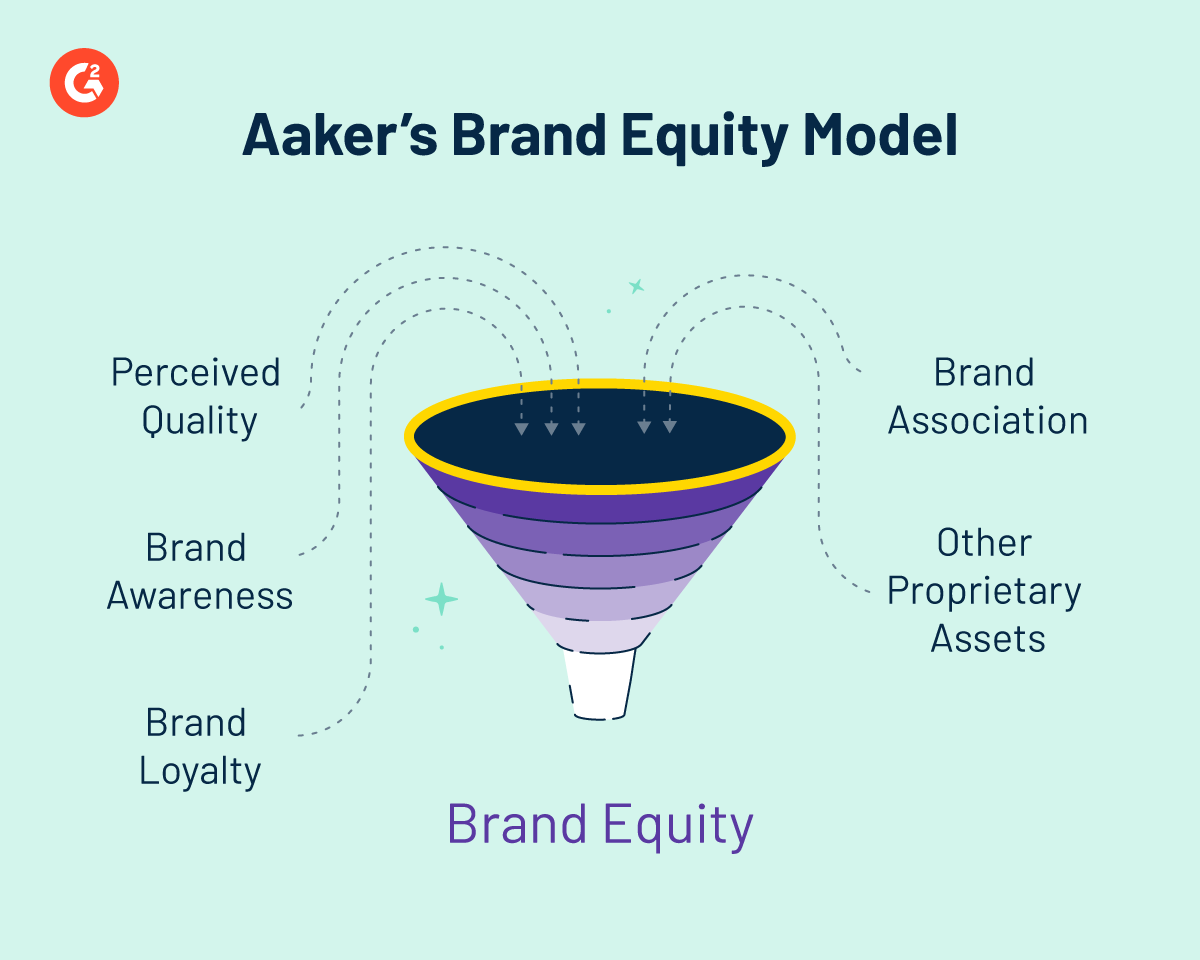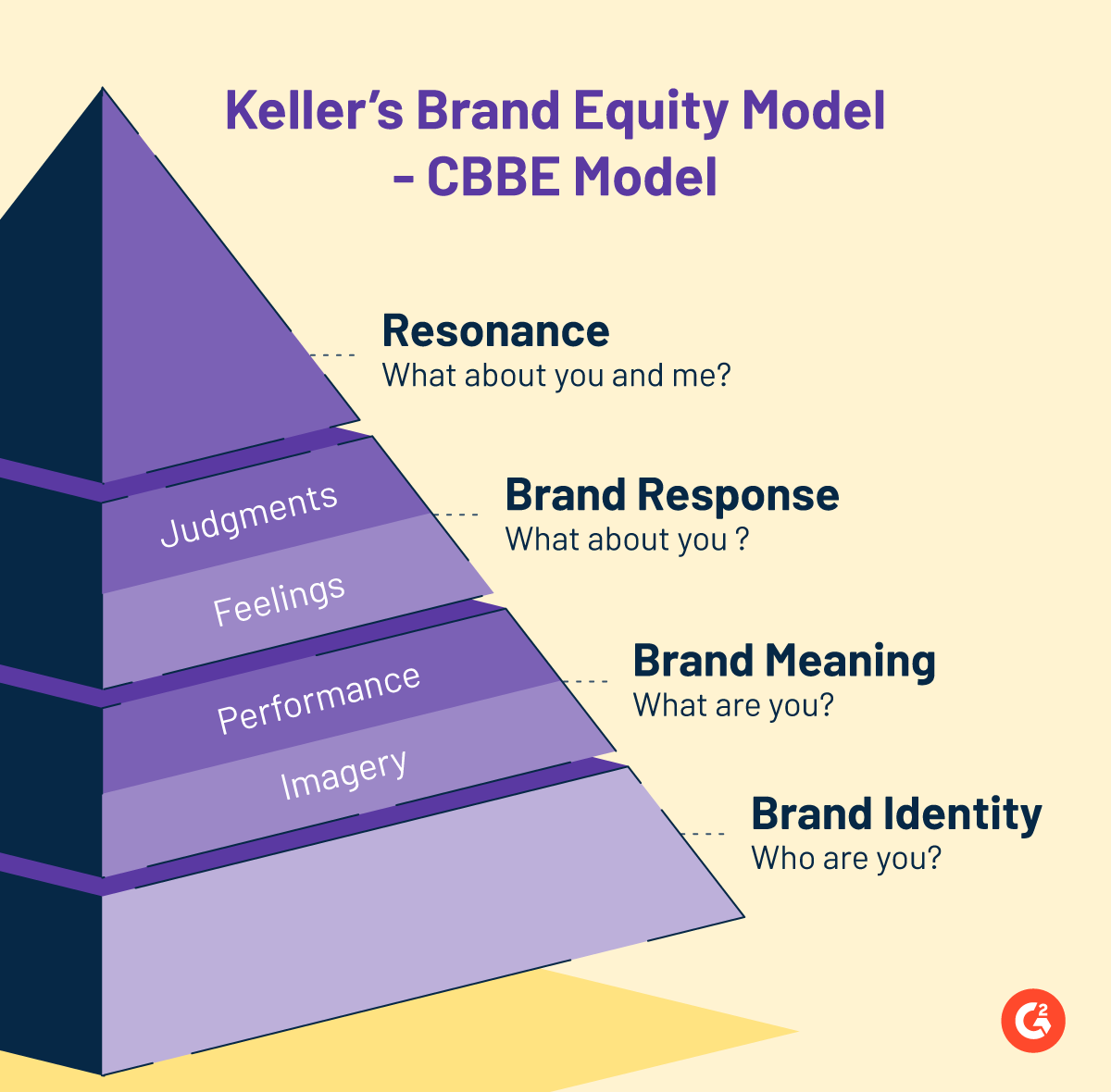What’s in a name?
When it comes to deciding whether to purchase a branded product over a generic one, a lot lies in a name.
There are many options available to a consumer in this competitive business world. But there’s always a particular product that they frequently choose. It’s the trust that the brand has built with them that negates any doubt when purchasing, even if the product is costlier than its generic counterparts.
The brand of choice has positive brand equity. In addition to meeting consumer preferences, brand equity also offers sizable benefits to the company that invested in building it.
Managing brand equity helps businesses generate higher profit margins, increase sales, and maintain customer loyalty. This is achieved by building trust with customers and providing them the right value. Many successful brands use media monitoring tools to record, track, and gather relevant customer sentiments about their products. It helps them balance positive and negative experiences to create and maintain positive brand equity.
What is brand equity?
Brand equity is the value premium that a brand generates when customers buy its products instead of generic equivalents. Positive brand equity helps you increase profit margins, improve customer loyalty and retention, and grow your market share.
Brand equity is one of the most valuable assets for your company. It’s an earned competitive advantage that results in higher sales and revenue, reduced overhead costs, and premium consideration for your brand.
You’ll know when you have high equity — regardless of how expensive your product becomes, your customers still want to buy it. Your ability to successfully spike product prices becomes the catalyst for immense success and brand expansion.
Although your price premium is fantastic, there are several other advantages of high brand equity. For example, having a reputable brand makes for a seamless brand extension strategy. You can appeal to target markets that you have never reached before by extending your product offerings and creating greater market penetration in return.
Having a solid reputation means that other reputable companies may want to partner with you to co-brand a product. Co-branding is an intelligent strategy two popular companies can implement to target a larger customer base and capitalize on each market.
Components of brand equity
There are three significant components of brand equity that provide your brand a competitive edge to attract and retain loyal customers.
1. Brand perception
Brand perception is how customers perceive a brand and what it represents. In reality, customers own brand perception and not the company. A brand may communicate its offerings differently, but the perception is built on how customers use the products, their experience, and the word-of-mouth recommendations they get on social media, review channels, or via face-to-face discussions. It also depends on the functionalities of the product and its reputation in the market.
Customers generally resonate with a brand’s mission, vision, and culture. When a brand delivers on its promise, it builds positive brand perception and brand equity.
There are several methods to measure brand perception, including:
- Interviewing small focus groups
- Surveying customers
- Media monitoring
These methods help you understand and analyze your brand’s positives and negatives by giving a voice to customers who feel strongly about sharing their opinions and experiences. You can use metrics such as Net Promoter Score (NPS) and Customer Satisfaction (CSAT) to get a quantitative view of your brand’s perception in the market.
2. Positive or negative effects
When your customers feel that your brand delivers on its promise, positive brand perception is created, which benefits your brand. On the contrary, if a brand fails to deliver its value proposition, it negatively affects brand equity.
Positive effects map directly to the commercial value your brand generates, and negative effects can lead to lost sales, attributing to financial and reputation losses. Try minimizing negative effects as much as possible. It’s tricky to change how customers perceive your brand when they experience or become aware of its negatives.
3. Value
Value is the outcome of how customers perceive your brand and what positive and negative effects they come across. Positive effects result in both quantitative and qualitative benefits for a brand. Positives will contribute to an increase in sales, profit margins (quantitatively), and goodwill and reputation (qualitatively).
On the other hand, adverse effects will have negative consequences. They result in decreasing sales, diminishing profit margins, and losing reputation and goodwill in the market. For example, when consumers are willing to pay more for a non-branded product, it indicates negative brand equity.
Want to learn more about Media Monitoring Software? Explore Media Monitoring products.
Importance of brand equity
Brand equity helps organizations earn more by spending less. Companies that invest in building brand equity tend to have a better return on investment (ROI) than their competitors. When your brand equity is positive, you can charge a premium price on products and services, retain more loyal customers, and increase sales on new product launches. Generic products do not enjoy such a competitive advantage.
Brand equity helps businesses expand their product portfolio while ensuring customers have the same trust and sentiment as they did for the parent brand. For example, Apple is widely known for manufacturing mobile phones, laptops, and other consumer electronics. The company recently expanded its portfolio to include smartwatches. Due to its positive brand image, Apple was able to drive the same trust and sentiments that customers had for its other products, leading to its adoption and increase in sales.
Building and maintaining brand equity plays a significant role in increasing profit margins and ensuring a better ROI. Companies usually spend the same amount in making a product even when it’s set at higher prices, but the brand equity in the market primarily determines its selling price. Simply put, any company with reputable brand equity can sell at premium rates and generate higher profit margins.
Brand equity models
Marketing professors, executives, and agencies have proposed various brand equity models. Some of the popular ones are David Acker’s model and Keller’s customer-based brand equity model.
Aaker’s brand equity model
A marketing professor and brand consultant, David Acker, proposed a brand equity model with five key components.

According to Aaker’s framework, five components of brand equity include:
- Brand awareness, also referred to as brand salience, is the degree to which individuals know or recognize a brand.
- Brand association includes positive or negative sentiments that customers associate with a brand.
- Perceived quality is a brand’s reputation in terms of quality and customer satisfaction.
- Brand loyalty relates to customers frequently purchasing products or services from a brand that offers them value according to their expectations.
- Other proprietary assets include trademarks, channels, trading partner relationships, or patents that ensure other brands can’t compete using a similar brand name or packaging that might be confusing for customers.
Keller’s customer-based brand equity (CBBE) model
Kevin Lane Keller, a marketing professor and a leading branding author, constituted the customer-based brand equity (CBBE) framework. The CBBE model addresses four critical questions related to a customer’s perception and attitude toward a brand.

Level 1: Brand identity (who are you?)
Brand identity relates to how customers distinguish your brand from your competitors in the market. It requires building a brand to create prominence in customers’ minds, and making it easily identifiable.
Brand identity is usually built when customers are unaware of your brand, and you attract them with ads and targeted marketing campaigns.
Level 2: Brand meaning (what are you?)
Once the customers are aware of your brand, they want to know more about product features, reliability, customer service, and the value it offers.
Brand meaning caters to these attributes and is divided into the following parts:
- Brand performance: When a brand delivers its promise and performs well over time, customers are likely to trust it.
- Brand imagery: It’s about how a brand appears to a customer. This messaging is set by marketing communications and involves meeting the psychological needs of a customer by building a brand’s personality.
Level 3: Brand response (what about you?)
Brand response is how customers respond to your brand based on their sentiments and perceptions. If your product or service is up to their expectations, they’ll love it and share it with their peers, and become brand advocates.
On the contrary, if their expectations aren’t met, they’ll get disappointed and share their negative experiences with their peers. They act as brand detractors in such situations. Businesses should try to build favorable judgments and address negative ones at this level.
Level 4: Brand resonance (what about you and me?)
Brand resonance builds stronger relationships with customers, which leads to repeat purchases or upselling and cross-selling opportunities.
At this level, you need to start recognizing and capitalizing on customer loyalties and attitudes. Harley Davidson is a notable example of building brand resonance. Two Harley-bikers in a gas station feel the connection and something to talk about even when they’re strangers. These bikers would always consider or prefer buying Harley Davidson bikes.
How to build brand equity
Building positive equity may seem simple, but it’s not. There are still a few tactics you can continuously use to maximize your existing equity while actively boosting it where you can.
1. Provide high-quality products
There is absolutely no getting around this one. Consumers demand quality, and they should, considering the number of options on the market. You’ll quickly lose your customers to your competitors if your product doesn’t hold up for them.
You should also consider the ease of use. Your product should be user-friendly with minimal issues to ensure a streamlined experience. If your product is no good, your brand won’t get anywhere. In fact, you will achieve the opposite of your goal by incurring negative equity, which is an extremely difficult reputation to shake.
2. Listen to your customers
How could you possibly serve your customers without knowing what they really need? You have to listen to and truly understand your customers and their pain points. With this information, you’ll serve them better and expertly cater to their every want and need.
Your customers will also provide valuable feedback on review websites and social media. Accept any constructive criticism you receive and use it to better your brand. Mistakes and disappointments are inevitable, but if you prove that you really address the feedback and work hard to improve, your equity will skyrocket. Remember, you’re only in business because you have loyal, paying customers. Don’t upset them, or you can face a disruption in sales that can quickly ruin your business and brand image.
Actively listen to your customers on review platforms. You'll understand exactly what your customers think of your product or services and how they use them.
Additionally, being present on review platforms is one of the best ways to build brand awareness.
3. Watch your competitors
Understanding your competitive landscape is important to ensure relevancy. What are your competitors doing that is better than what you are doing?? What do they have that you don’t? How are they serving consumers better than you are? All of these are important aspects of a competitive analysis that can’t be overlooked when you’re working to build equity. Learning what your competitors are doing and then doing it better is a surefire way to keep your competitive edge and top-of-mind awareness of your target market.
4. Perfect your brand strategy
Strategic brand management guides how your brand is communicated to the world. Ensuring that your strategy is perfect and consistent with all of your efforts is the best way to communicate a powerful message that fosters positive opinions and perceptions from your target market. Your efforts will be in vain if you don’t have a solid strategy. It’s crucial to have the right direction to guide that strong equity you hope to achieve.
How to measure brand equity
Measuring brand equity can be tricky for business owners, as tracking people’s actual emotions and sentiments isn’t always easy. There are two broad approaches you can follow to measure brand equity: quantitative and qualitative.
Quantitative approach
This is mainly a data-driven approach that uses sales, financial, and employee success data to provide insights into current trends in brand equity. Quantitative approaches can help you analyze past data to better understand the present. But it can’t help forecast what’ll happen in the future, and why.
You can evaluate the following metrics to measure brand equity:
- Profit margins: Amount by which sales revenue exceeds business costs
- Growth rate: Percentage change of company’s revenue, earnings, dividends, or sales
- Market share: Portion of the market occupied by a particular product or service
- Profitability: Degree to which a business can yield financial gains
- Purchasing frequency: Number of times a customer purchases a product in a specific time period
- Price sensitivity: Extent to which customer demands change with price revisions
Qualitative approach
This approach uses customer experience data to understand why people make a particular purchase decision and how brands make room in people’s minds.
Qualitative methods that help you evaluate a brand’s perception and equity include:
- Monitoring social media: Businesses can use social media monitoring tools to listen, track, and gather details on relevant conversations around a brand.
- Conducting surveys: Surveys help you realize the actual sentiments of people connected with your brand.
- Interviewing consumers: Assess brand awareness and understand why they like certain brands and their products. Evaluate your brand’s perception against competitors.
Common problems in measuring brand equity
Brands face some common problems while measuring equity. Stay prepared to address these problems to get accurate and actionable insights.
Problems in measuring brand equity include:
- Improper planning: Clarify the purpose of the brand equity study, the metrics you’ll use to track results, and the next steps. Ensure you’re studying a brand that has already built awareness in the market so that you can gain helpful insights.
- Setting a broad or narrow competitive reference: Ensure you don’t categorize products or services incorrectly and avoid setting a wrong competitive frame of reference for respondents. Remember to include questions about key competitors in your study.
- Respondent drop offs: Avoid creating lengthy surveys, so people don’t feel fatigued while completing them.
- Limiting response choices: Cover all possible responses in close-ended questions.
- Selecting focus groups: Select focus group participants who know the brand well. A less-informed person would only guess and might not provide helpful information.
Examples of positive brand equity
For many people, Apple is the first brand that comes to mind when thinking about equitable companies. The greatest example of this is the day a new Apple product is launched. The number of people that gather around the globe on the day of a launch is incomparable. People spend hours camping in lines just to get their hands on that shiny new product that isn’t much different from its predecessor.
On the other hand, Starbucks, an epitome of American coffee culture, can’t go wrong in the eyes of its customers. Love them or hate them, Starbucks has a fiercely loyal customer base that supports them regardless of their price increases Add to that the madness that comes with new instagrammable drinks, and the brand equity gets even better.
Examples of negative brand equity
Negative brand equity is built as a result of incidents that create a negative brand perception among customers. You need to track and address such experiences quickly to avoid damaging your brand's equity.
There are many examples of negative brand equity on the market. For instance, Toyota’s brand equity took heavy damage when the automaker had to recall more than 8 million vehicles due to unintended acceleration in 2009.
In the same vein, United Airlines’ share prices nosedived when they decided to force a passenger off one of their planes because they were overbooked. Later, instead of apologizing for their questionable behavior, United Airlines maintained that they acted correctly in the situation. This exacerbated the entire situation and resulted in losses of over $1 billion.
Build your equity
Every brand aspires to build positive equity in the market, but few can fully achieve it. Brand equity helps you achieve remarkable ROIs while spending minimal money on advertising and promotion.
To be a category leader, you must offer high-quality products and boost your brand awareness while getting to know your customers better.
Learn more about brand monitoring and understand how customers perceive your brand.

Sagar Joshi
Sagar Joshi is a former content marketing specialist at G2 in India. He is an engineer with a keen interest in data analytics and cybersecurity. He writes about topics related to them. You can find him reading books, learning a new language, or playing pool in his free time.

